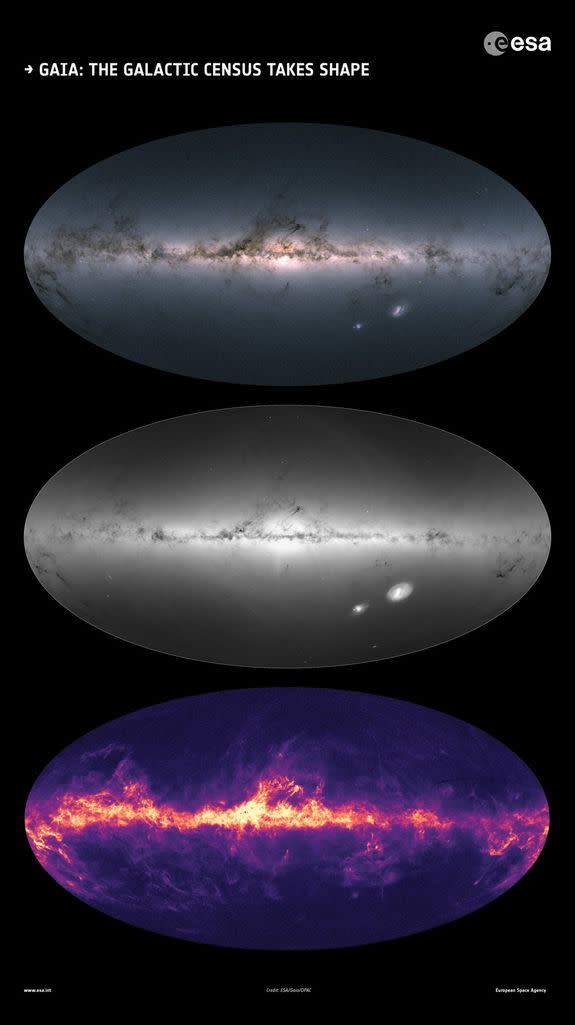Astonishingly detailed map of the Milky Way will blow your mind

We now have the most detailed catalogue of stars in our Milky Way galaxy yet.
The new map — created using data collected by the Gaia satellite — shows about 1.7 billion stars, including many objects never seen before, according to the European Space Agency (ESA), which runs Gaia.
SEE ALSO: Thousands of previously unseen black holes lurk near the center of our galaxy
The catalogue represents almost two years of sky charting.
“The observations collected by Gaia are redefining the foundations of astronomy,” Günther Hasinger, ESA Director of Science, said in a statement.
“Gaia is an ambitious mission that relies on a huge human collaboration to make sense of a large volume of highly complex data.”
The new map of the sky builds on Gaia's first map, which was released in 2016 after about a year of observations. It came complete with 2 millions stars, according to the ESA.
The 2018 map is quite an upgrade.
“The second Gaia data release represents a huge leap forward," Gaia researcher Anthony Brown said, referring to previous space-based attempts to measure the distances and positions of stars in our galaxy.
For example, ESA's Hipparcos satellite, "surveyed some 118,000 stars almost 30 years ago,” Brown added, so Gaia marks a giant leap forward for this kind of work.
Astronomers will use the new map to learn more about certain stars in our galaxy than ever before.

Image: ESA/Gaia/DPAC
Gaia's catalog includes the stars' positions, brightnesses, and colors, plus information about asteroids in our own solar system. It even shows other galaxies seen from the satellite's point of view on the sky.
This meta-view of our galaxy could even help scientists learn more about dark matter.
“Gaia is astronomy at its finest,” Fred Jansen, ESA Gaia mission manager, said in the statement.
“Scientists will be busy with this data for many years, and we are ready to be surprised by the avalanche of discoveries that will unlock the secrets of our galaxy.”
WATCH: Scientists found a weird galaxy without dark matter

